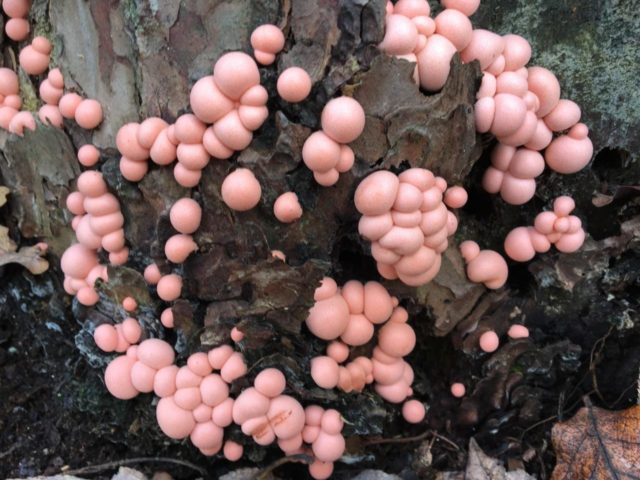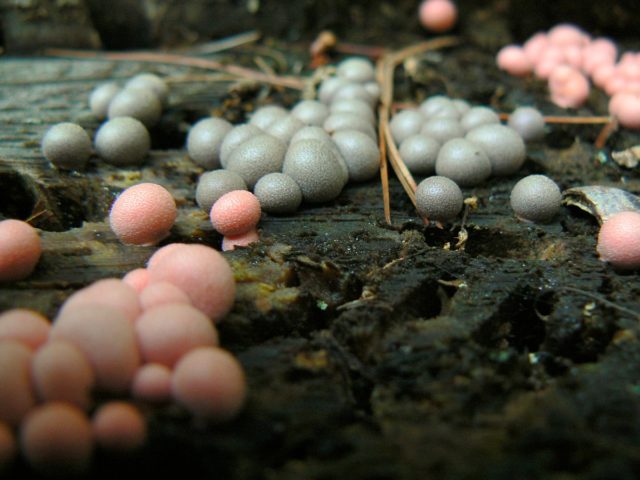Content
Likogala woody - a representative of the Reticularievs, the Likogala clan. It is a type of mold that parasitizes rotting trees. The Latin name is lycogala epidendrum. In common parlance, this species is called "wolf milk".
Where woody likogala grows

The specimen in question begins to bear fruit only after the complete depletion of the section of wood on which it is placed
Wolf's milk is a fairly common species, and therefore it can be found almost anywhere in the world, with the exception of only Antarctica. Likogala arboreal grows in dense groups on old stumps, dead wood, decaying wood, giving preference to wet places. It can be found not only in forests of various types, but also in garden plots or parks. The optimal time for growing is the period from June to September. In hot and dry seasons, this species may appear much earlier than the specified date.
What does a likogal slime mold look like?

Slime mold spores are complete and independent organisms that are structurally similar to amoeba
The fruiting body of a lycogala (lycogala epidendrum) is spherical, regular or irregular in shape. At a young age, it is colored pink or red; as it grows, it acquires dark brown shades. The size of one ball reaches up to 2 cm in diameter. The surface of the likogal woody is scaly, and inside it there is a reddish or pinkish mucus-like liquid, which, when pressed, is sprayed. The shell of the fruit is very thin, it is damaged almost at the slightest touch. In overripe slime molds, it bursts on its own, due to which colorless spores come out and dissipate in the air.
Is it possible to eat wolf milk mushroom
This type of mold is definitely inedible and therefore cannot be used for food. Some sources claim that inside the fruiting body of woody lycogals there are spores that carry various diseases.
For this reason, these mushrooms should not be trampled or sniffed.
Conclusion
Likogala woody is a rather interesting specimen, which often catches the eye not only in various forests, but also in garden plots, as well as in parks. This species can hardly be called a mushroom, since recently the category of slime molds belongs to mushroom-like organisms. The wolf's milk mushroom is inedible and does not carry any other value; on the contrary, some experts believe that it is dangerous to humans. True or fiction, one can only guess, but the facts of defeat by spores of lycogals have not yet been registered.








